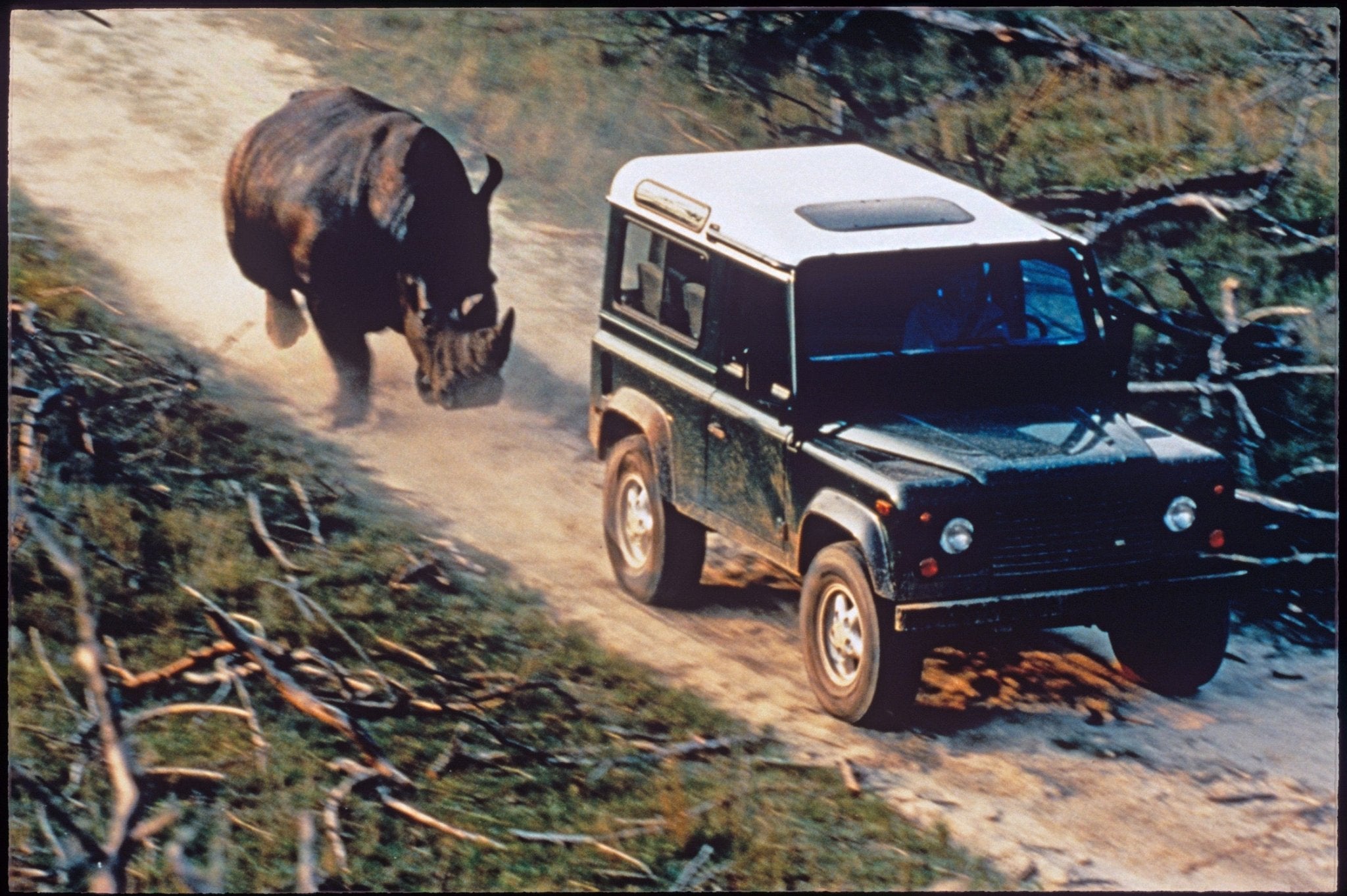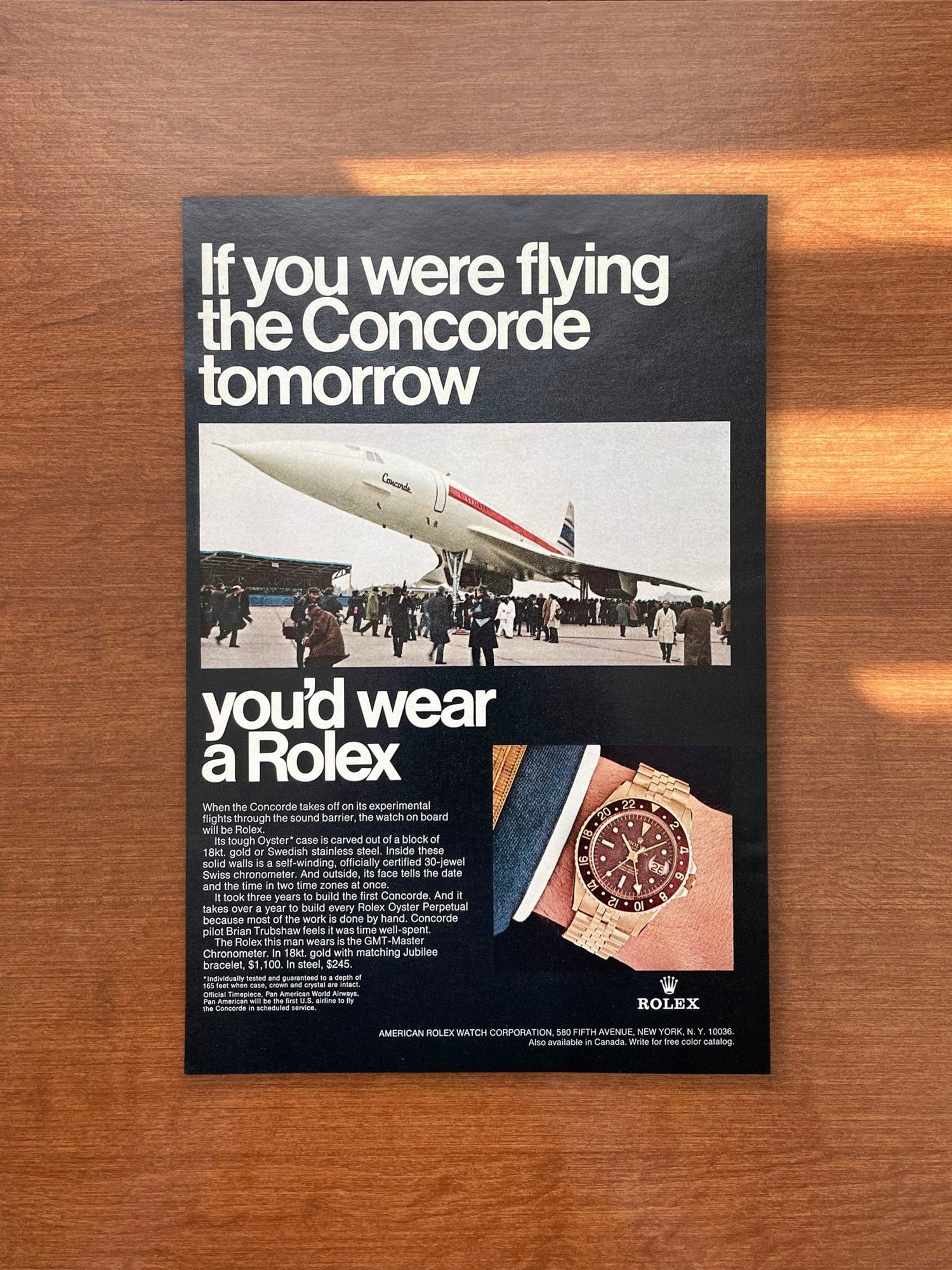
Interview: Land Rover Adman Allen Richardson
How Land Rover Advertisements Were Created
Ironically, this amazing opportunity to interview Allen came about because I had the good fortune of being the subject of an interview. In September, Oren Hartov of Gear Patrol asked me, “Which brands besides Rolex do you feel designed the most compelling ads and why?” Without giving it a second thought, I answered “Land Rover.” The furthest thing from my mind was someone like Allen reading my response. But he did. And he left a message in my Inbox with the subject line: “I worked on Land Rover.” Of course I replied and we hit if off over the course of email and phone chats. I just loved hearing his stories about working in advertising, specifically on Land Rover. As I listened to him, I was dying to retell his experiences and all of the fun facts I was learning about so many great Rover ads. I thought an interview would be the best way to introduce Allen and allow him to educate and entertain those like me, someone fascinated and curious about all things having to do with magazine advertisements. I’m so glad Allen was game to do this. I’m very-excited and extremely-proud to share the backstories behind some of the most iconic Rover ads and offer a glimpse into the world of print advertising - told by a man who was there. Enjoy!
As if Allen’s interview wasn't enough, on one of our calls, he revealed that he still had original advertising proofs from back in the day. These extra-special pieces of advertising history are extremely limited. Too see what's currently available, visit the Land Rover Proof page.

1. Briefly share your career background as it related to working on the Land Rover account and the advertising campaign for their models.
From 1991-2000 I was an advertising art director for an agency in NYC on the Range Rover/Land Rover account. That agency, Grace & Rothschild Advertising launched the brand in the US in 1986 with the muddy Range Rover ad and continued doing all their ads until the summer of 2000. In that role, I concepted print ads and TV commercials. I also hired the photographers and directors, oversaw the retouching of the images, and preparing the files to go to the publications.
2. I have to know... How did the Range Rover ad with the Nike Air Max come about? Specifically, the placement of a Nike product in the context of a Range Rover ad. Details please!
The Nike ad came about because of a new feature in that year’s Range Rover, the air suspension (circa 1993). A few teams of writers and art directions were working on the project. The technology was so new, my partner and I thought an analogy would help explain it to people. So we looked down at our feet and there it was. Next we had to figure out how to describe it and since we were comparing a car to a $120 pair of sneakers, we came up with the headline about “every size budget.” The client loved it and we contacted Nike. They had a new shoe coming out and they were excited to get some free visibility for it. Since we never named the shoe, it didn’t constitute an endorsement and no money changed hands. It was more of a free product placement.

3. A number of Defender ads seem to take place in settings such as the desert, jungle, mountains, etc. Some ads even have wild animals! Please share some firsthand accounts how some of these scenes were shot and ultimately composed.
Those shots happened in a variety of places and circumstances. For the “You’re the Food” ad, we used a Hollywood backlot that had jungle foliage. I think it was where they used to shoot Gilligan’s Island. The photographer made clear sets of “eyes” that he could backlight as if they were reflecting. For the Rhino ad, we went to an animal park in South Carolina. The rhino was named Tank. He had terrible eyesight, but he responded to his trainer’s voice. So we took the back door off the Defender 90, the trainer sat in the back and called out to Tank until he started following the vehicle. We picked up the speed until he was chasing it. That shot is basically unretouched. He was really chasing the vehicle. The Pith Helmet ad was shot in the San Diego Wild Animal Park. We picked an area with lush jungle vegetation then prepped the foreground and built the quicksand. For “Life Expectancy”, we found a place near the Gulf Coast of Florida that had both alligators and jungle looking terrain. Alligators were the nastiest animals I ever shot. They brought them on a flatbed to the location with their jaws taped shut and carefully placed them around the Defender, then we stayed out of their way.

4. What was the creative process like to create an ad? For example, was the headline brainstormed first and then the photoshoot planned?
Those ads always involved a play between the visual and headline, so they were always thought up together. For example “the most beautiful vehicle” covered in mud. Or “you’re the food” with hungry animal eyes. Sometimes the direction would vary—Range Rover might want to go luxury, or they might decide to talk about their African heritage— and the creatives would direct their thinking that way. It affects whether you’re thinking about mansions or elephants. A team of a writer and an art director would spend hours kicking around ideas, sketch up their favorites in black marker and present them to Roy Grace and Diane Rothschild, the creative directors. The ones they liked would be drawn up in full color marker comps (no photoshop back then), mounted on boards and presented to the client.

5. How much direction did you get from Land Rover to write and design an ad? Did they typically give you guidelines or have specific information they wanted included?
We would do all the ads for a model year at once. We’d get briefed on new features or things Land Rover wanted to highlight, then we’d come back a few weeks later with ads (and commercials) for the whole year. The clients would pick their faves, then we’d produce them over the course of the year They were always clear with what they wanted to talk about: airbags, redesigned interior, air suspension, etc. We always did a snow/winter ad to highlight the four wheel drive and we shot those a year ahead. Because of the time it took to print and ship the magazines, we’d shoot the ad in winter, retouch the art, then send the files out the following Oct/Nov to appear in winter magazines.
6. How did ads ultimately get in a magazine? Do publications reach out to your agency or do you seek out the ideal placement?
My agency had a media department that analyzed everything from the customer, to what they read and watched, then figured out the best publications to advertise in. Typically the Range Rover was in more high end publications such as Fortune and Forbes, while the Discovery was in more general interest/family publications. Based on sales volume, Defender only did one ad a year and it typically ran in all the car pubs (Motor Trend, etc.) plus more outdoorsy magazines. Once the media buy was approved by Land Rover, they would reserve space in specific issues and it was up to us to create the ads and prepare the files for the printers. As part of preparing the files, we’d send the printer four pieces of film for the C M Y K colors. We’d also print proofs and send for them to use as a reference for how the ad should look. We printed extra proofs to give to dealers, the PR department and advertising award shows. The reprints here (proofs) are from that process.

One more fun fact from Allen…
All the Range Rover/Land Rover studio shots, such as the Nike ad, were shot using one of those large 8x10 format cameras with the legs and the bellows. It produced huge, grain-free images on individual pieces of 8”x10” film.
But for the outdoor stuff, we wanted it to feel more real and documentary than other car makers. So while most car ads were shot with 4x5 or other large formats, we used 35mm film. The grain and color of 35mm gave it more of a cinéma-vérité feel, like we were documenting something that really happened vs. a staged artificial feel. It’s somewhat subliminal, but it gives those ads a different feel than all the other car companies.
Original Advertising Proofs
When Allen told me he had some material left over from his days working at Grace & Rothschild, I was curious what he had… Needless to say I was super-happy when I found out he had some extremely well-preserved examples of the best Rover advertisements. Actually, what Allen had were much more than ads... He had original “proofs.” Not knowing much about proofs, I listened intently as Allen explained what they were. As I came to understand the role proofs played in advertising, I was drawn to them even more. I’ll say, these are true artifacts of ad history.
Last question for Allen… what are proofs?
As part of preparing the ad files to send to the magazines, the agency would make prints of the ad for the magazine to match for color accuracy. These “proofs” or as they’re sometimes called in the ad business “reprints” were printed on very good stock with rich, accurate color. While printing them for the magazine, the agency would run off additional ones to be used for various purposes - for Land Rover to send to dealerships, to be used to get PR and press, and to be entered into advertising award shows. The people that worked on the ad, such as me, also got copies of them. In short, these ads are proofs that were made in the preparation leading up to the ad appearing in the magazine. It’s similar to a test pressing of a vinyl album or the first film print of a movie.
